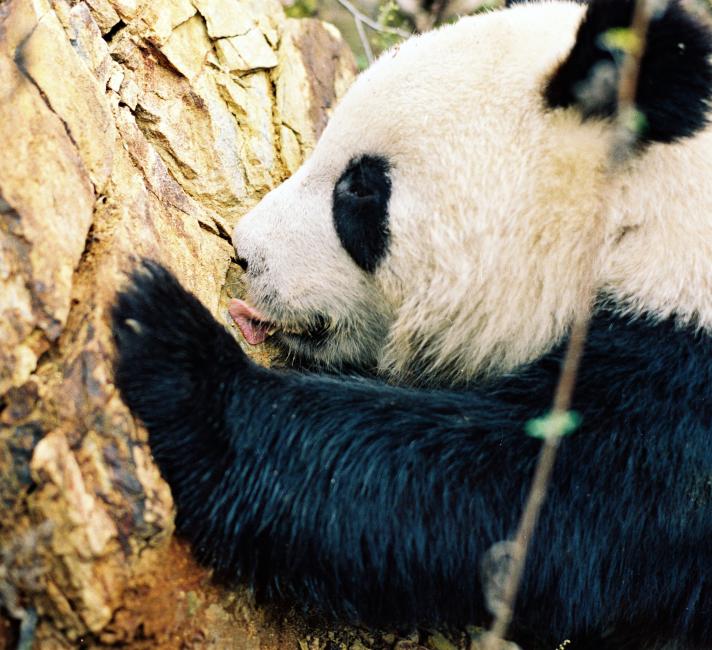
Giant pandas: living proof that conservation works species:
Affected by: Habitat loss and fragmentation , Climate change
The charismatic giant panda is a global conservation icon and the symbol of our organisation. Thanks to decades of successful conservation work, wild panda numbers are starting to recover, but they remain at risk. Their habitat is severely fragmented which is the biggest threat to their survival.
Pandas typically lead a solitary life. They're excellent tree climbers, but they spend most of their time feeding. They can eat for about 14 hours a day, mainly bamboo, which is 99% of their diet (though they sometimes eat eggs or small animals too).
Giant pandas are living proof that conservation works. And even better, by protecting pandas we’re also helping protect the wider environment where they live, for all the wildlife and the people that depend on it.

"I’ll never forget the day I came face to face with one of the world’s most iconic species - the giant panda - as this charismatic and universally loved species is rarely seen in the wild. As I stood staring into his dark solemn eyes, I was overcome with a sense of tranquillity. I also felt thankful to have shared this unique experience alongside our dedicated field team who work passionately to protect this incredible species."
Senior Programme Adviser, Asia

Where do giant pandas live?
Wild pandas could once have been found throughout eastern and southern China, northern Vietnam and northern Myanmar. Now the pandas range is restricted to just six isolated mountain ranges in Gansu, Shaanxi and Sichuan Provinces in western China.
Pandas live mainly in deciduous broadleaf, mixed conifer and sub-alpine coniferous forests, between elevations of about 1,200-3,400 metres.

Why giant pandas are so important
Giant pandas help to keep their mountain forests healthy by spreading seeds in their droppings, which helps vegetation to thrive.
The Giant panda’s forested habitat is also important for local people – for food, income and fuel for cooking and heating. They also play a crucial role in regulating water flow. The pandas live in the mountain catchment areas of the Yangtze and Yellow rivers. The forests act as natural watersheds, helping to control water runoff, reduce soil erosion and maintain water quality, which over a half a billion people depend on.
Panda habitat rivals the highest biodiversity of any ecosystem in the world. It's also vitally important for other threatened and endangered species, including golden snub-nosed monkeys, takins, red pandas and snow leopards.
By protecting pandas in the wild we’re helping conserve the wider environment, for the people and wildlife that depend on it.






 Top 10 facts about Pandas
Top 10 facts about Pandas
 Top 5 facts about Red Pandas
Top 5 facts about Red Pandas
 Panda quiz
Panda quiz
 National Panda Day 2025
National Panda Day 2025